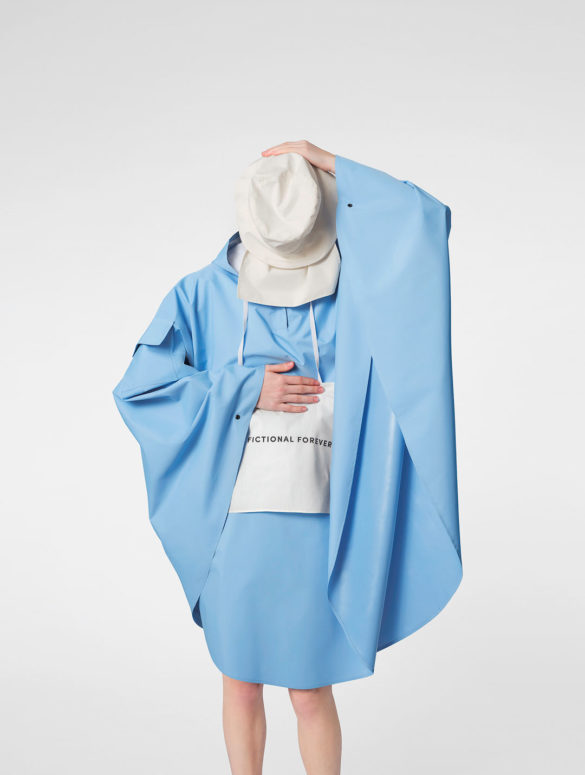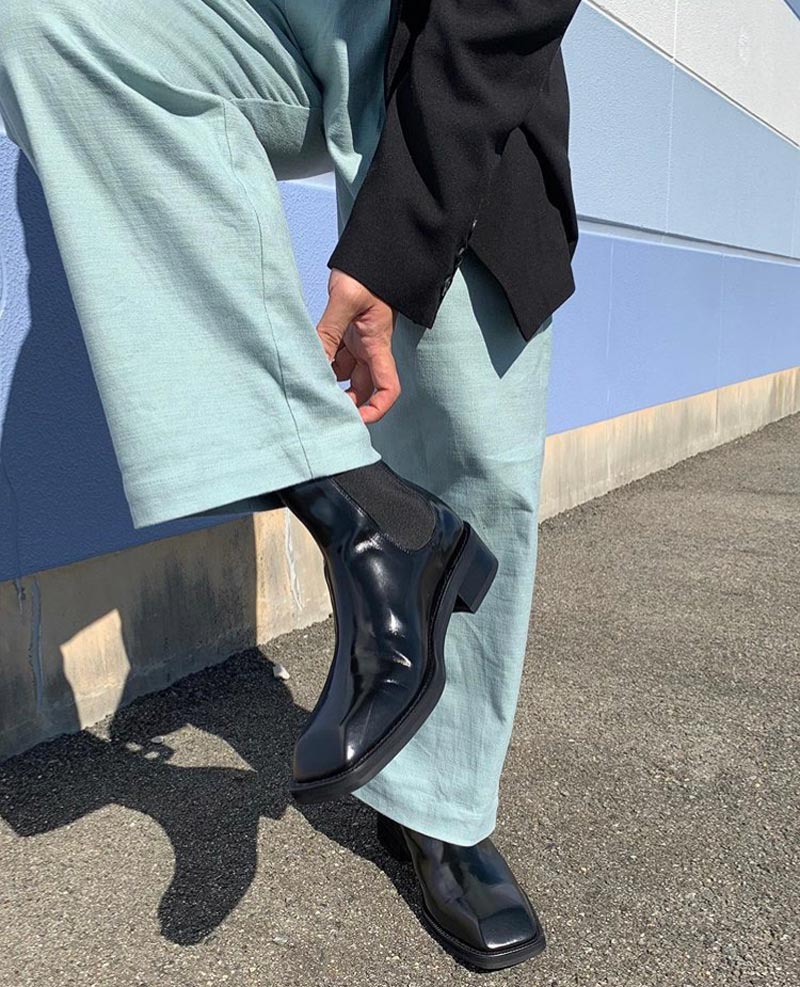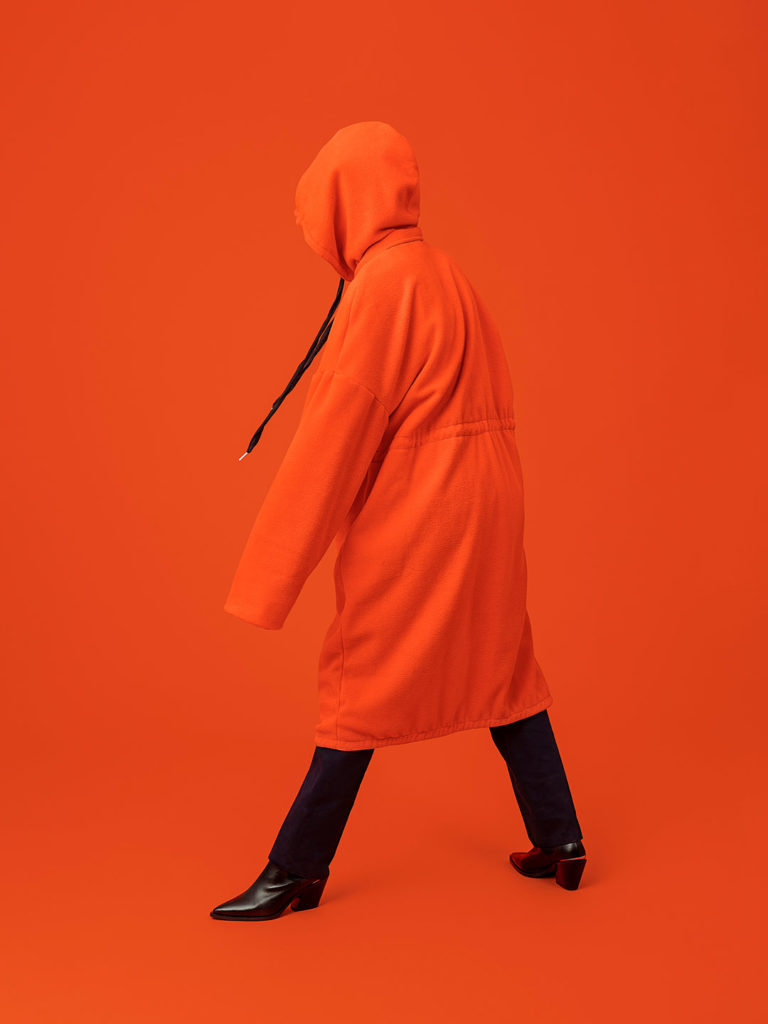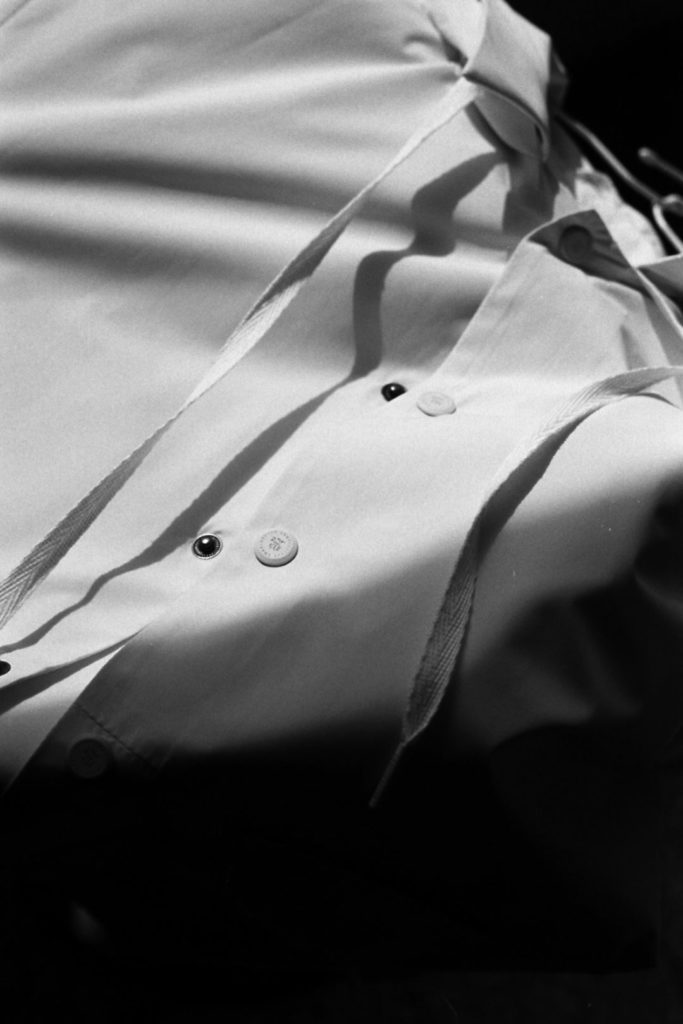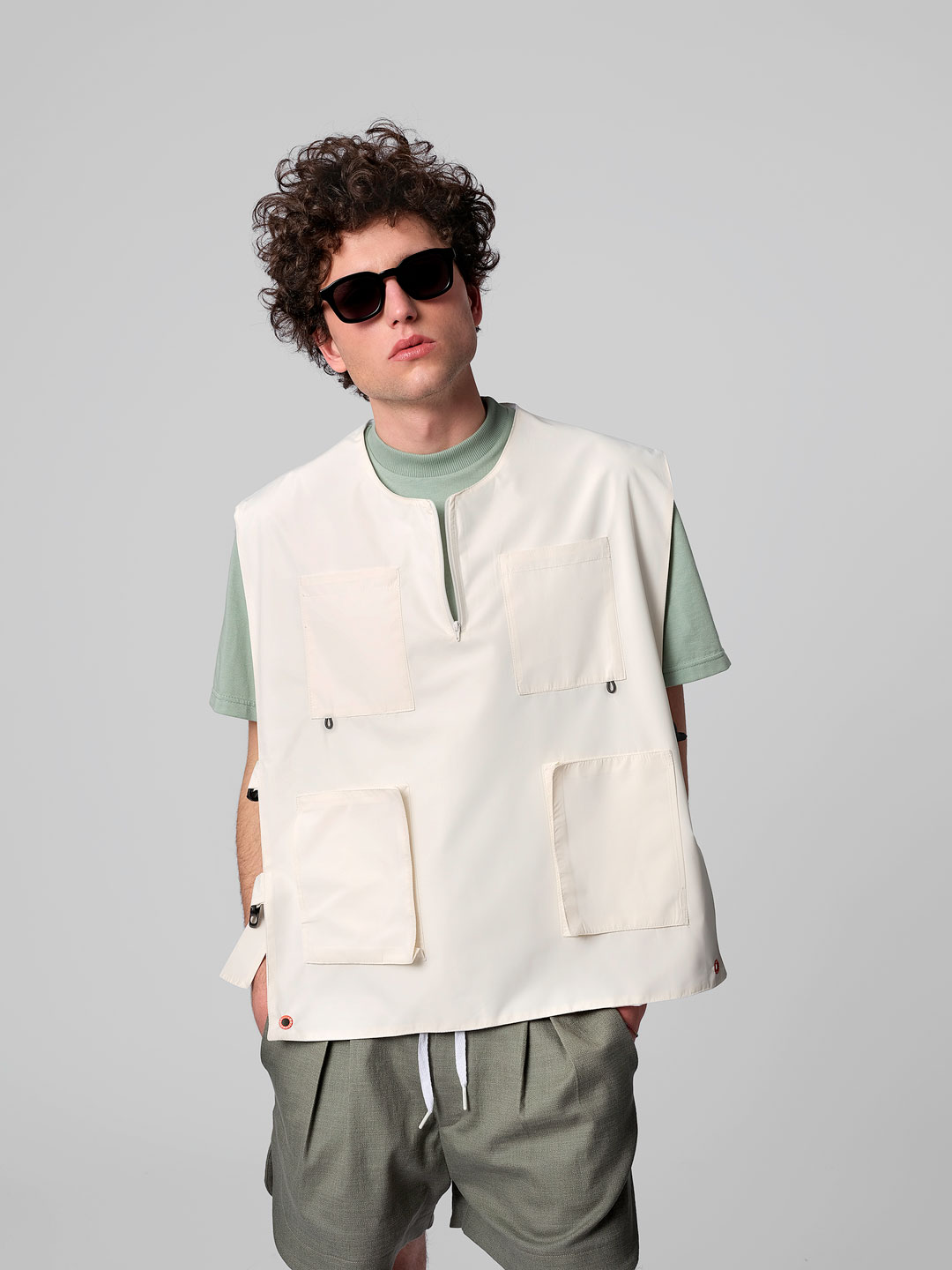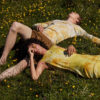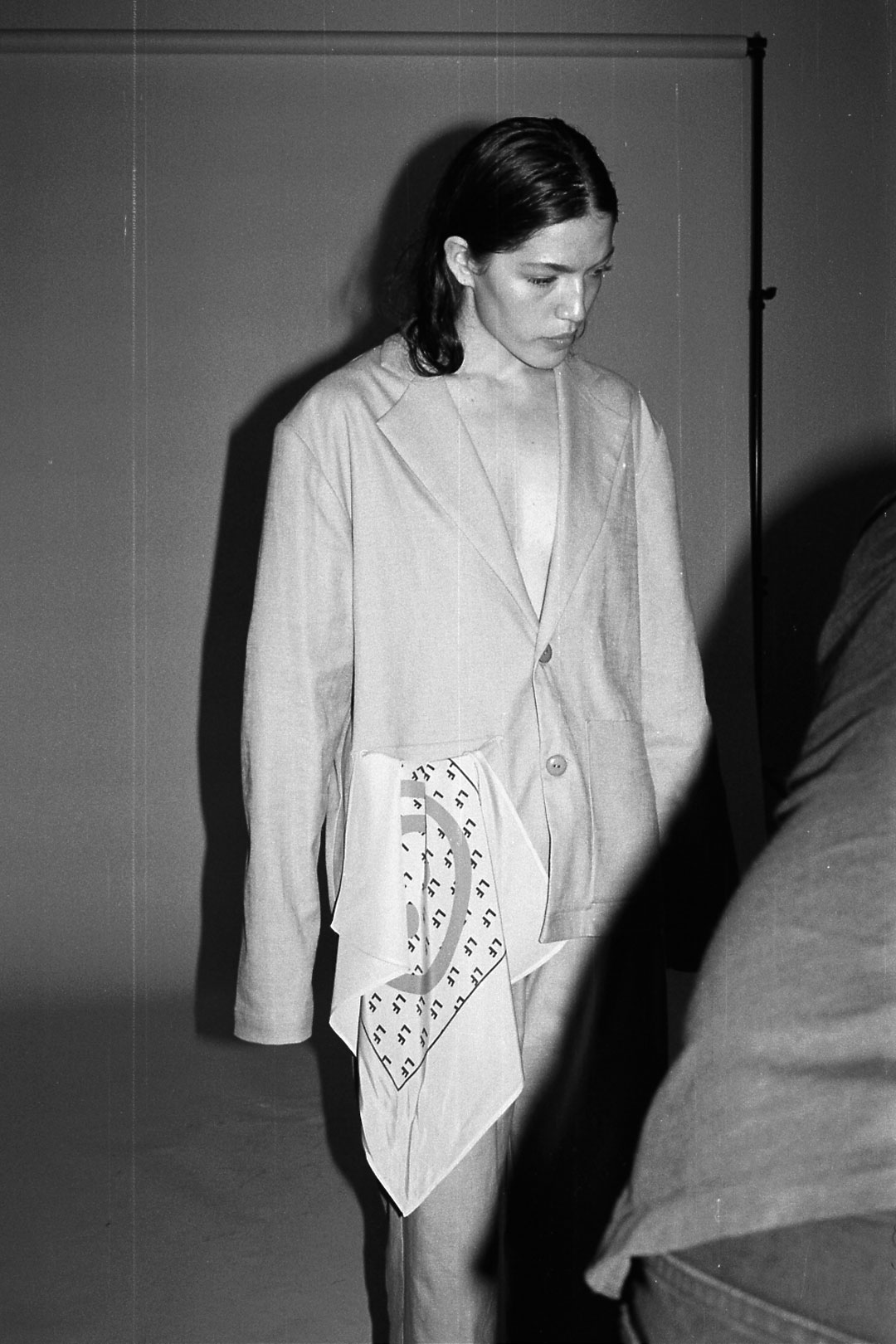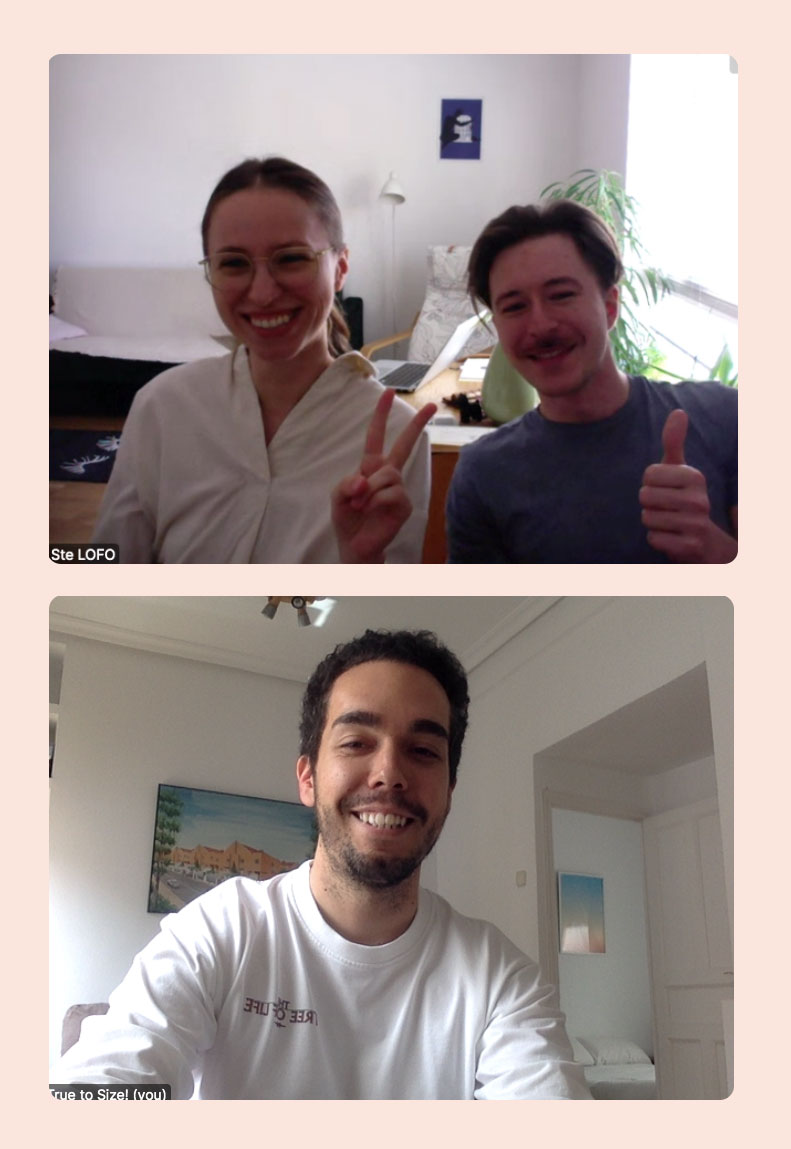Igor talked with Ana and Stelian from LOFO on a Madrid-London video call in May 2020 – there’s even an image to prove it at the end of the article!
The photos you’ll see as you scroll down have been taken by Andriana Oborocean, Codrut Sebastian Negut and Tim Dugan.
You’ll find the word ‘interact’ and its derivatives a few times in the following conversation with clothing label LOFO. Also ‘connect’ and some other synonyms.
Listening and learning from users to improve products or services seems like a basic rule in most industries, but it’s not usually the case in fashion. Clothes are produced based on a trend cycle, so why bother to make something better if it’s not gonna be worn after a few months?
Ana and Stelian from LOFO aren’t following the traditional rules. Coming from a graphic design background, the couple started a design studio and shop in Bucharest, which later transformed into a clothing label after receiving positive feedback from their customers on a small collection.
Now based in London, LOFO creates trans-seasonal pieces with a design thinking approach. A constant work-in-progress with the main objective of always improving what they have already done.
Igor Termenón
Ana-Maria Grigoriu & Stelian Dobrescu
Let’s start by talking about the statement you use to describe your brand: “On top of the simple organised model, experiments in regular clothing are made to regularly test social and commercial outcomes.”
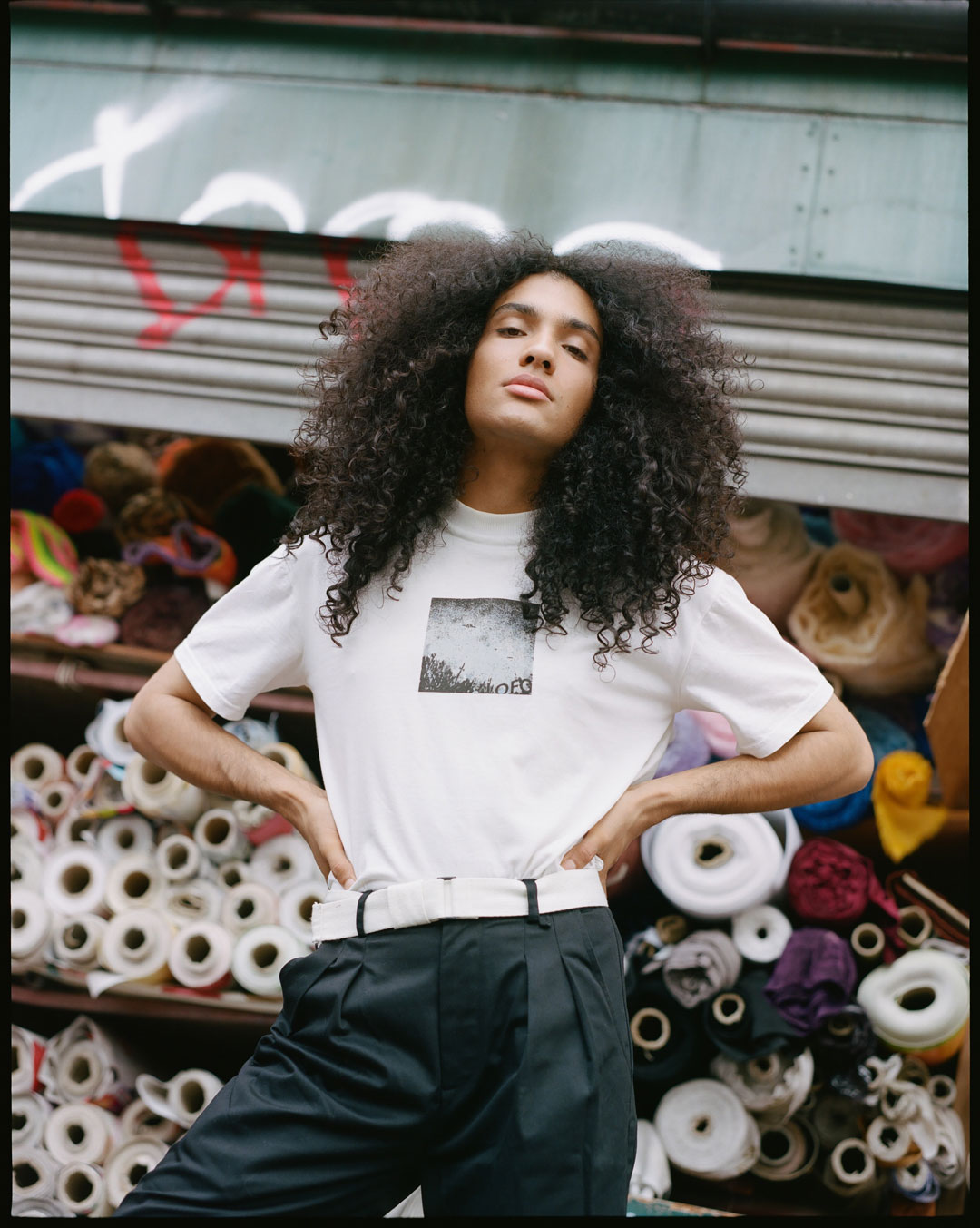
When we started LOFO1, we decided we wanted to have a systematic approach. We were making the pieces we thought would cover most scenarios, in terms of how people would actually wear them depending on what they do or where they go.
Mostly, we made pieces that could be considered ‘basics’ – we didn’t want to make overcomplicated things and we wanted to focus more on the function, rather than on the aesthetics. So, we paid special attention to the fabrics, the production processes, the shape of the garments… this is why we named it a ‘permanent collection’, which covers most types of pieces.
You have to listen and see what people are saying and doing, instead of imposing your own vision. The way they interpret it – if you leave space for that – is even more rewarding.
How do you test those social and commercial outcomes you mention in your statement?
We try to see how people actually relate to the pieces of clothing: how and when they use them, and in what way. Sometimes, we’re really surprised by how they combine them with other garments, in ways we wouldn’t have thought of. And also, when and where they actually wear these pieces.
When you create a new product, it’s usually developed blindly. You know your target, and try to imagine your customer and those scenarios in which you think they’d wear the pieces, but it’s totally different in real life. You have to listen and see what people are saying and doing, instead of imposing your own vision. The way they interpret it – if you leave space for that – is even more rewarding.
Our customers, especially those in Japan2, like to share this type of reactions and information with us through social media.
How do you encourage this from your side? When your customers receive a product, does it have something that makes them want to share this information with you?
Being graphic designers, we have around 5 little pieces of – let’s say – interactive material we attach to the products so our customers can interact with.
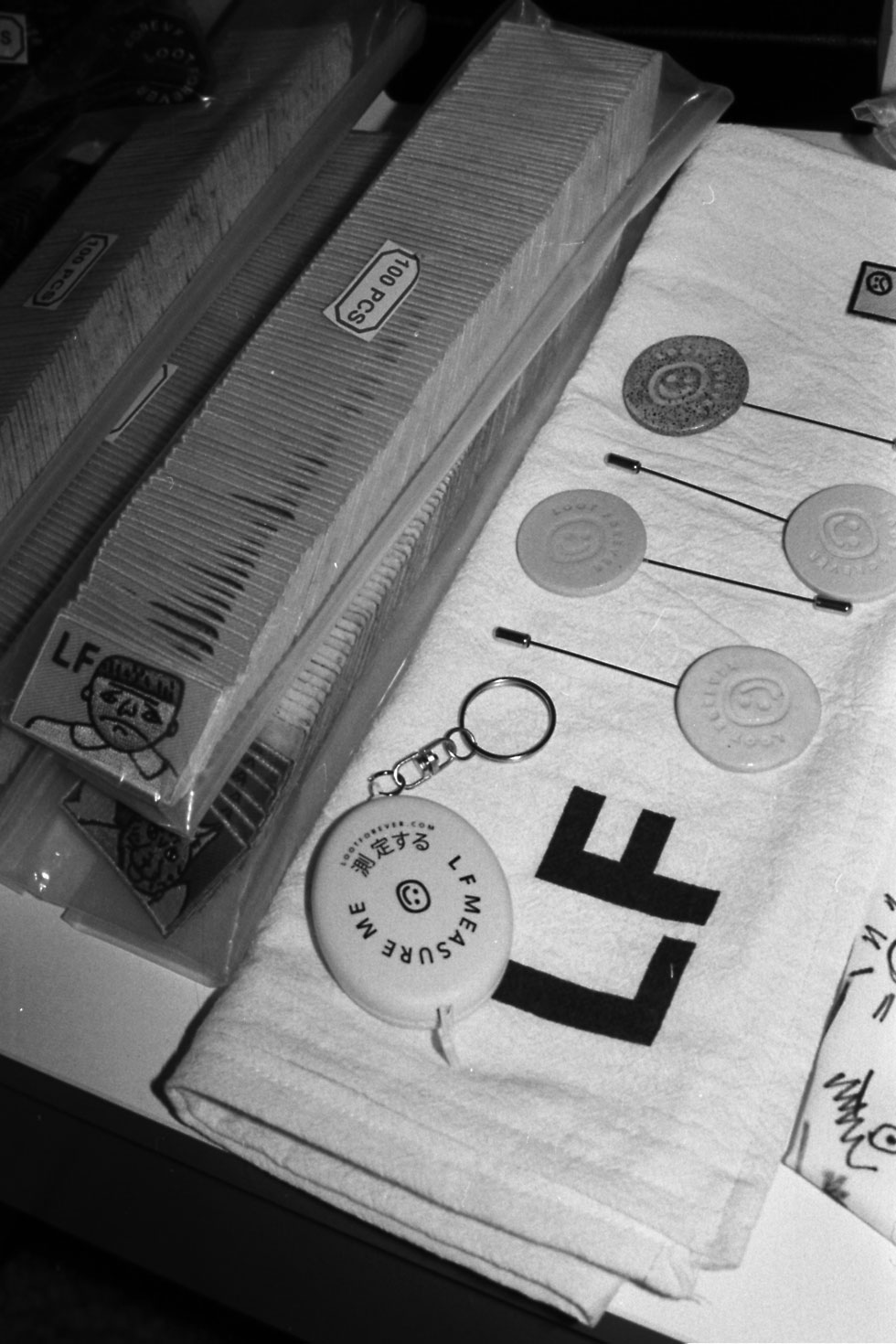
From custom trims, cord ends, snaps, buckles and labels to embroideries hidden inside the clothing or double pockets; there are all sorts of intricacies that we enjoy putting in the pieces in order to let the customers be surprised.
And it really works. People who appreciate clothing enjoy this kind of approach: someone trying to relate to them and doing something a bit different than the usual way. We really have fun doing this and building the brand.
What factors do you consider when looking into a new product?
We create new pieces as improved versions of the previous ones. It’s basically a work-in-progress with every piece that we make and we also have our own database of types of clothing.
We started out with this idea that there’s like 50 pieces of clothing you can actually wear in whatever context, and that’s what we’re trying to achieve. So far, we’ve made around 40 types3 of garments. It’s basically a collection of what we thought could be an exhaustive and comprehensive model of any type of piece someone would wear.
We’re trying to build on that – let’s say it’s our own special approach, but it works. And this is when the fun begins because we think, at this point, we feel comfortable with adding that extra layer you usually see in the fashion industry: the aesthetics and not just the functionality.
People who appreciate clothing enjoy this kind of approach: someone trying to relate to them and doing something a bit different than the usual way.
Left, an image taken by Codrut Sebastian Negut that Ana and Stelian particularly like because of its movement. Right, behind the scenes details photographed by Tim Dugan
You describe your garments as trans-seasonal. What are the elements a piece of clothing should have to be defined this way?
We think it’s in the approach. First of all, it has to be timeless: many garments are produced based on this idea that they need to be consumed and thrown away.
Also, for a piece to be trans-seasonal, it has to have a strong basis that you can build upon. Let’s say you have a coat, the model and the way in which it’s built need to have an approach that allows it to be a piece that will turn heads season after season – it needs to be a classic.
Some brands do this beautifully even if the fashion industry works according to seasons, because there’s this idea of clothing being a consumable.
Some brands do this [classic pieces] beautifully even if the fashion industry works according to seasons, because there’s this idea of clothing being a consumable.
On your website, your customers can see the cost breakdown for every product. Why did you decide to show this information?
We wanted to make the process of putting a price on a product transparent for a couple of reasons.
First, we wanted people to know what it is like to build a fashion brand. In theory it sounds easy, but pricing it’s a difficult process that we’ve learned as we’ve gone along. Also, to let customers know about the fashion model. In the traditional cycle in which you make a collection, it goes to buyers, they place an order, you produce it and it gets to their stores; you have pretty fixed margins that you can operate within. For instance, you have to multiply your production price by 2.2 and the buyer multiplies it by 2.8, and that’s the price that reaches the customer4.
We want to put that out there and get customers accustomed to the production process and how the clothing is made. It’s a clearly needed thing in the fashion industry to provide some transparency and show how you do the whole sourcing, sew the clothing, pay the workshop and even how the workshop pays its workers… If you see the cost breakdown, you know how that piece of clothing has been produced.
We want to put production costs out there and get customers accustomed to the production process and how the clothing is made.
How does this affect wholesale?
We have a different approach to wholesale. We don’t do collections, send them to buyers and they place an order. We make special pieces for wholesale, which actually works with our pricing model. You don’t find the same products in a shop in Japan and on our website, we try to separate these two channels.
You’re in the process of moving your production to London from Romania. Can you tell me more about this?
At the moment, we’re still producing in Romania. We work with a small family workshop that has 4 seamstresses; they work with a few brands but like to be close and they have a nice approach to the process.
In July or August we will hopefully be able to move to a new building in Poplar and we will have a small production line there, where we will be sewing our own clothes. Although we will also maintain the relationship with the workshop in Romania.
There’s a lot of effort going into connecting with the community and actually making local production work. Especially in the current scenario, in which you’re waiting for a cargo ship from China to bring clothes to be sold in the UK.
You’ve told me before about this building but, can you share some more information about this project?
The building is dedicated to reviving the community in Poplar. The area has a big tradition of people who have worked as seamstresses and in the textile industry, so London College of Fashion, UAL and Poplar HARCA are trying to bring this back to this area.
It’s like a fashion incubator composed of many studios and also production lines on-site. There’s a lot of effort going into connecting with the community and actually making local production work. Especially in the current scenario, in which you’re waiting for a cargo ship from China to bring clothes to be sold in the UK.
Apart from connecting with the local community, this physical space will also allow you to generate even more interaction between your brand and your customers.
When we get this space of our own, we’ll be able to put our LOFO Club5 into practice. Finally, after around 2 years, we will act upon this because, up until now, it’s only been an online thing.
We’ll have our launch parties, people coming in to interact with the clothes… when everything opens up, that’s what we’ll be busy with.
We’re a product company, and clothing just happens to be something we really like and has a lot of context, with which we can express the things we want. From here, we’ll try to branch out and see what events and parties we can make, connect with the local culture and people who are making art, music, dancing…
There are lots of people coming from different backgrounds into the fashion industry and applying their own principles – this opens up pathways to not doing things in the traditional way.
With the current situation, I think there’s an opportunity for independent and small brands to position themselves against the big players in the industry. What are your thoughts?
The fashion landscape right now is in a really interesting place. With this whole thing, we hope people will get more courage to do things that didn’t seem to be that usual before. You kind of got the feeling that there was this big block you couldn’t move in the fashion industry. Lots of talk about sustainability and community, but very little actual action.
There are lots of people coming from different backgrounds into the fashion industry and applying their own principles – this opens up pathways to not doing things in the traditional way. As a brand that has a different outlook than that of the industry, we have to try to put everything we’ve talked about into place and have a hands-on approach.
1. LOFO is the short form of LOOT FOREVER, the original name of the project founded by Ana and Stelian.
2. Japanese customers love LOFO’s systematic approach to fashion. If you’re reading this from Tokyo or are visiting soon, you can also find the label’s pieces at SO_NAKA MEGURO.
3. Some of the types of clothing you can currently find on LOFO’s online store include a classic raincoat, a linen bomber jacket, a four pocket vest and knitted biker shorts.
4. In a traditional pricing model, the retail to consumer price is 5-6x the price of production costs. LOFO’s retail prices have a markup ranging from 1.5-4x.
5. According to LOFO: “The club is a collective formed around our main activities. It’s made up of our friends, some of our customers and people that we regularly work with.”


